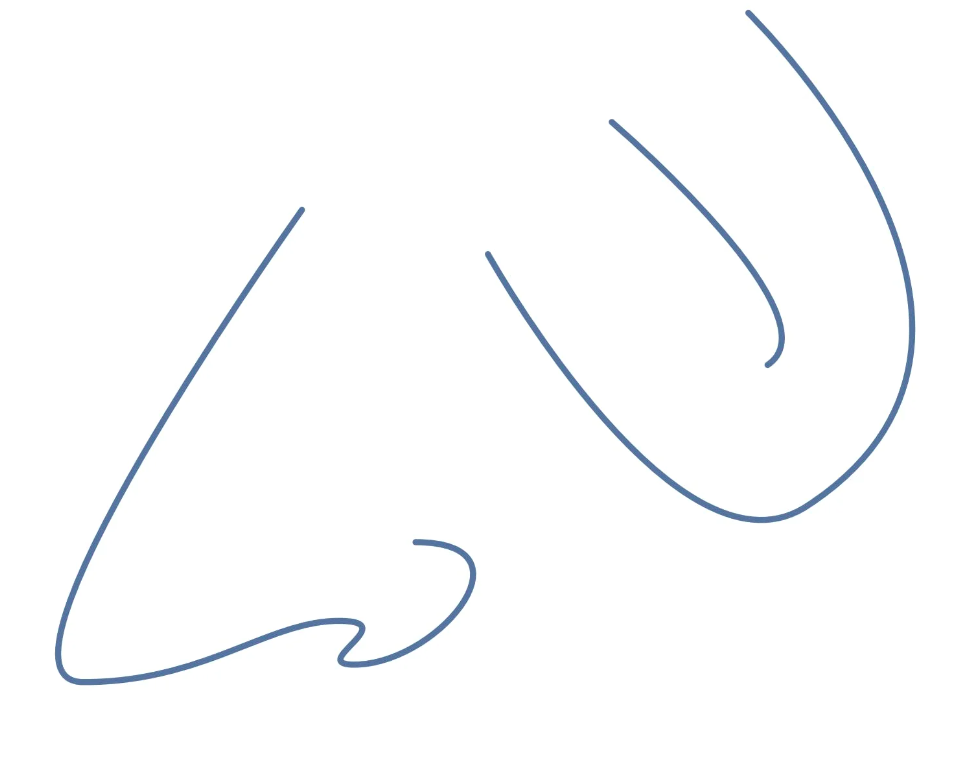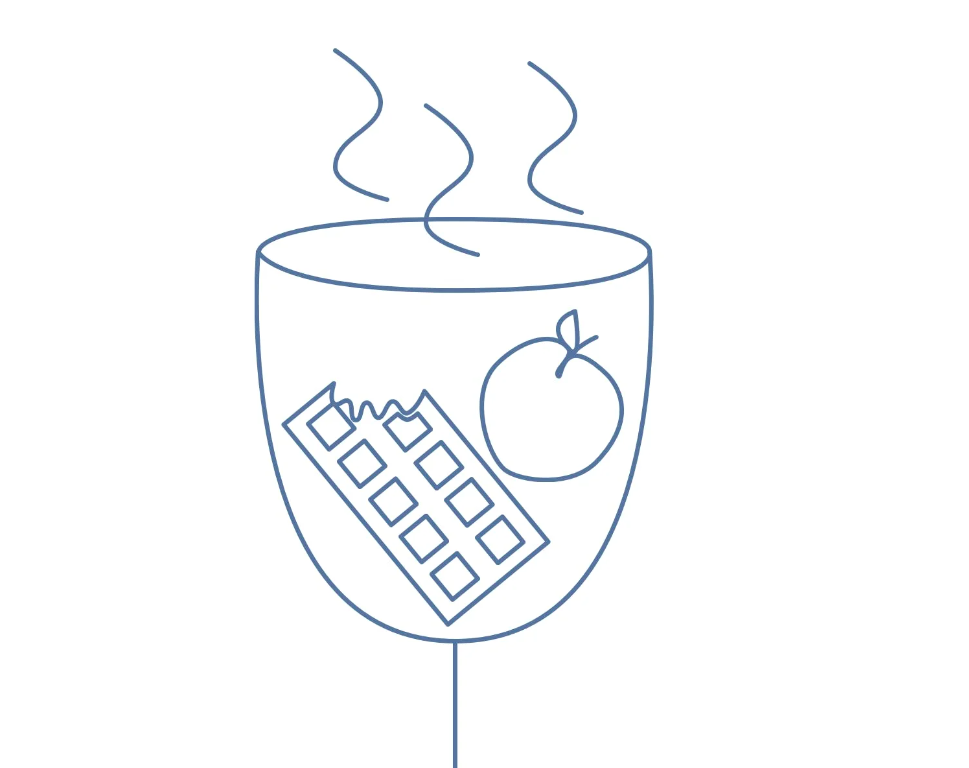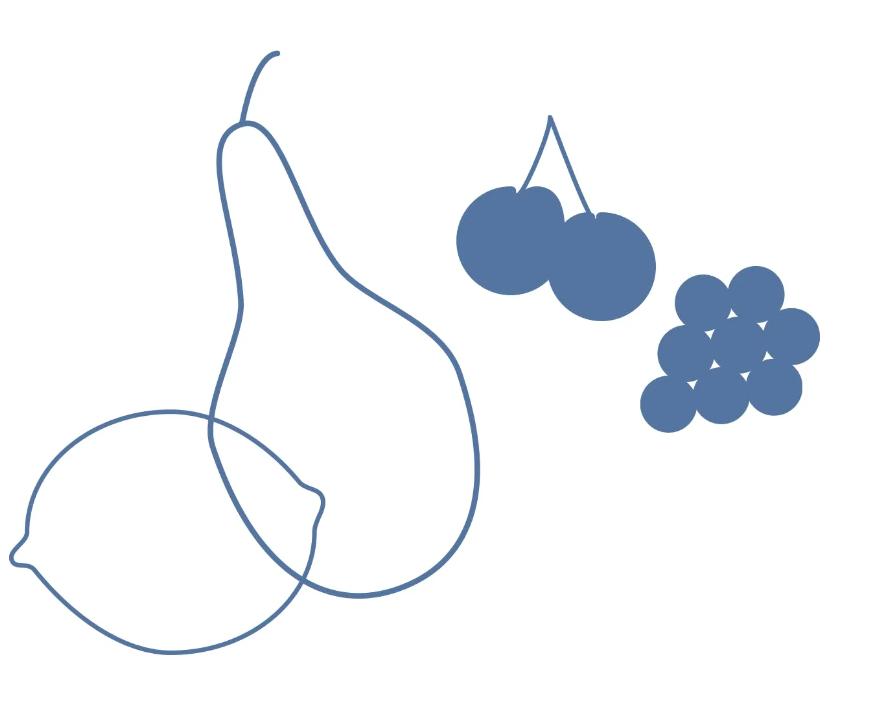Happy Weekend,
Reader questions inspire my favorite newsletters. This week’s topic is courtesy of a wonderful conversation with Swati. 👋
She said:
I’m curious to learn how to distinguish all those flavours they talk about – woody, chocolate, plumy, etc.
A reader question from Swati
So, how do we find flavors in wine?

Taste vs. Smell
We call it wine tasting, but in reality, we’re smelling.
Thanks to our tongues, we have five basic tastes: sweet, sour, salt, bitter, and umami. That’s it for those receptors. It’s our nose doing the real work.
Before, you say, “Poppycock. It’s a plum because I can taste it with my mouth.”
Do me a favor. Set fruit to the side for now.
Imagine: You’re walking into someone’s house for a holiday. It could be Christmas, a summer BBQ, or any special celebration.
Now that you’re there, how do you smell all those delicious things?
- Do you gulp at the air with your mouth agape, funneling in the smells?
- Or do you inhale the simmering food and the anxiety of chatting with your in-laws ?
Smell is how we sense wine, and our perception of the world has a huge impact on what we find in our glass.

Where The Aromas Come From
In wine tasting, we talk about the aromas, flavors, bouquet, and nose of a wine. All these words are referring to what you smell in your glass. Let’s stick with aromas for the sake of clarity.
As you likely know, wood is used in the winemaking, but how do chocolate and plums end up in wine made out of grapes?
These aromas come from the grapes themselves.
Each grape has its own profile of possible smell combinations. The smells that show up in your glass depend on where the grapes grew and the decisions of the winemaker.
I mentioned wood earlier, and this has an effect on the wine’s aromas too.
Wood imparts aromas like baking spices and vanilla. And depending on the type of wood, you may find coconut or dill.

Common Aromas in Red and White Wines
Red wines’ aromas are based in red fruits or black fruits. There are many fruits within each category, but that dividing line is helpful for beginners.
White wines all have citrus: lemon, lime, orange, etc. Beyond that, there is a a whole range of fruit flavors from the ordinary (apple, pear) to the exotic (passion fruit, pineapple).
You Need To Retrain Your Nose To Discover More Aromas
Now, your aroma vocabulary is dependent on the fruit you’ve smelled and committed to memory. Yes, you need a bank of smells to fall back on.
The fastest way to do this is to put your nose in everything.
Go to the supermarket and pick up all the fruit. Hover your nose over your dinner before you eat. Build a reference book of smells in your brain.
How do you discover more aromas in your wine? You discover more aromas in real life.
The Other Stuff
With all this fruit talk, you’re probably wondering about those other smells. Things like:
- Herbs and flowers
- Spices and minerals
- Butter and bread
- Forest floor and farmyard
Yes, these do exist in wine too. But we’ll save that talk for another day.
For now, focus on the fruit.
As you smell your next wine, try to pick out the subtle aromas. Be patient, this is a skill that takes time to build. But there’s only one way to get better, start smelling.
This Week’s Free-Run Juice
Free-run juice is a wine term for the grape juice that comes from their own weight prior to pressing. These are weekly tidbits that came out from my own wine exploring.
Wine Advice From Other People
I had a great discussion with some friends on Twitter about the best advice they received when starting in wine.
Here are my favorite answers:
Wine enjoyment is almost entirely subjective so drink what you like.
Jim
Start writing, preferably in public, about the area you are interested in. Instead of just reading about it.
Alice
Read The Wine Bible cover to cover
– Sam
The Keeper Of The Cup

If you’re wondering about smells in your wine, imagine the strange aromas that have emanated from the Stanley Cup.
Here’s a fun podcast episode with Phil Pritchard, the owner of the magnificent mop, who takes care of Lord Stanley’s Cup as winning teams celebrate with it all summer.
Check out the interview from Somm TV.
Ready to commit to wine learning?
Increase your wine confidence one weekly newsletter at a time.
New issue comes out every Friday
Unsubscribe at any time.
